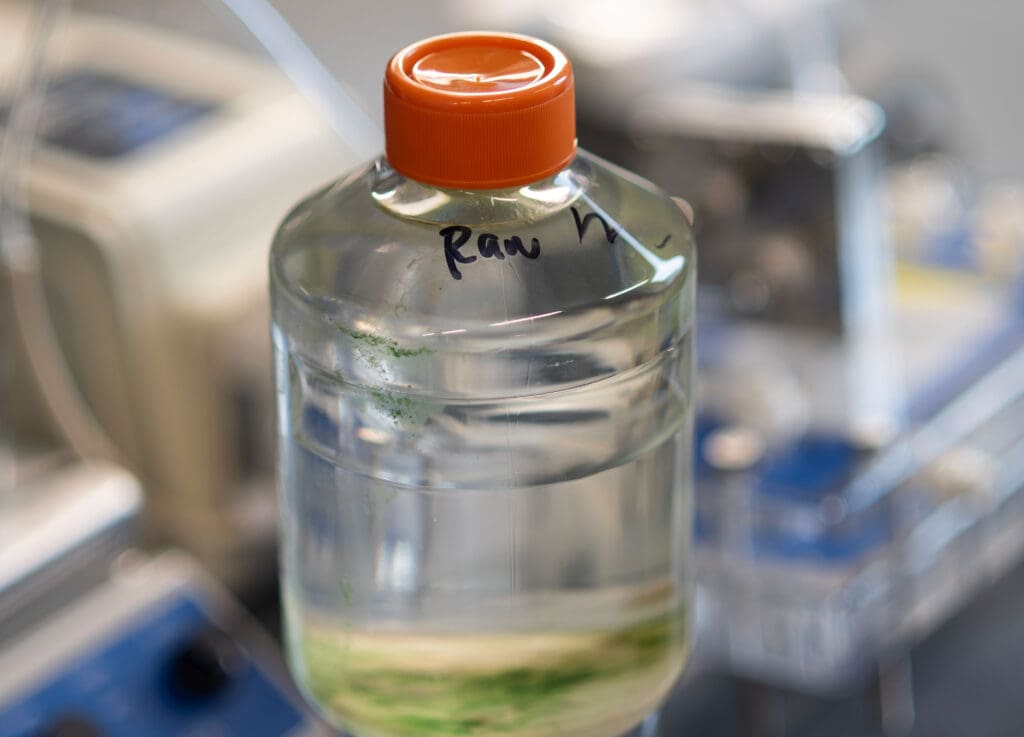5 Advances to Protect Water Sources, Availability | Newswise – Newswise

Report on Recent Advances in Water Research and Sustainable Development Goals
A series of recent studies published in American Chemical Society (ACS) journals present significant findings that align with and support the United Nations Sustainable Development Goals (SDGs), particularly those concerning water, environmental health, and sustainable infrastructure. This report summarizes five key research advancements and their direct contributions to achieving these global targets.
1. Mitigating Saltwater Intrusion in Tidal Rivers to Ensure Water Security
This research directly addresses the increasing threat of saltwater contamination in freshwater sources, a critical issue for several SDGs.
- SDG 6 (Clean Water and Sanitation): The study highlights how rising salinity threatens the availability of safe drinking water and agricultural water resources.
- SDG 13 (Climate Action): It identifies rising sea levels and extreme climate events as primary drivers of saltwater intrusion, linking water management directly to climate adaptation.
- SDG 14 (Life Below Water) & SDG 15 (Life on Land): Increased salinity degrades freshwater and estuarine ecosystems, impacting biodiversity.
Key findings identify the primary causes of increased upstream salinity in tidal rivers:
- Deeper water channels resulting from rising sea levels or dredging activities.
- Extreme climate phenomena, including droughts and storm surges.
- Increased runoff from anthropogenic sources such as road salts and agricultural fertilizers.
The report recommends continuous monitoring of salt concentrations to inform effective management strategies, thereby safeguarding water resources and supporting the resilience of communities and ecosystems against climate change.
2. Advanced Stormwater Capture Strategies for Sustainable Urban Environments
A study on the performance of dry wells in Southern California offers strategic insights for urban water management, contributing to the following SDGs:
- SDG 6 (Clean Water and Sanitation): Dry wells enhance groundwater replenishment, a vital strategy for securing clean water supplies in regions susceptible to drought.
- SDG 11 (Sustainable Cities and Communities): The research provides models for developing resilient urban infrastructure capable of mitigating floods and managing water resources sustainably.
- SDG 13 (Climate Action): Effective stormwater management is a key adaptation measure for cities facing more intense and frequent rainfall events due to climate change.
The study evaluates two primary deployment strategies for dry wells:
- A series of wells located along storm drain outlets is most effective for maximizing stormwater capture during long, moderate-intensity rainstorms.
- An even distribution of dry wells across a land area is more effective for reducing localized street runoff and mitigating flash floods.
3. Utilizing Sea Turtles as Bio-indicators for Marine Plastic Pollution
Research into the foraging habits of sea turtles provides a new methodology for monitoring and understanding marine plastic pollution, which is crucial for several SDGs.
- SDG 14 (Life Below Water): The study offers a deeper understanding of the threats plastics pose to marine species, informing conservation efforts. It found that the type of plastic, not just its abundance, influences ingestion risk.
- SDG 12 (Responsible Consumption and Production): By identifying the most harmful types of plastic (e.g., sheet-like flexible plastics), this research can guide policies aimed at reducing the production and consumption of high-risk plastic products.
Key observations from the assessment include:
- Sea turtles are more likely to ingest specific forms of plastic, particularly flexible, sheet-like materials.
- Juvenile sea turtles are at a higher risk of plastic ingestion due to their more varied diet compared to adults.
4. Innovative Fog Harvesting System for Clean Water Access
A nature-inspired technological innovation presents a novel solution for water collection, directly supporting key development goals.
- SDG 6 (Clean Water and Sanitation): The development of a trumpet flower-shaped fog harvesting system offers a potential new source of safe drinking water for communities in arid or water-scarce environments.
- SDG 9 (Industry, Innovation, and Infrastructure): This research exemplifies how biomimicry can drive innovation in developing sustainable and accessible technologies for fundamental human needs.
The system’s design features:
- A water-repellent exterior surface combined with water-attracting spots to efficiently capture airborne water droplets from fog.
- An integrated V-shaped channel that directs the collected water into a storage container for future use.
5. Development of Reusable Hydrogel Beads for Water Softening
This research introduces an effective and safe technology for water treatment, with significant implications for water quality and infrastructure preservation.
- SDG 6 (Clean Water and Sanitation): The hydrogel beads provide an efficient method for softening hard water, improving water quality for domestic and industrial use. Their antimicrobial properties further enhance water safety.
- SDG 11 (Sustainable Cities and Communities): By preventing the buildup of calcium and magnesium, this technology protects pipes and appliances from damage, contributing to the longevity and sustainability of water infrastructure.
The performance of the hydrogel beads includes:
- Removal of up to 96% of water hardness ions (calcium and magnesium).
- Demonstrated antimicrobial activity against common bacteria such as Staphylococcus aureus and E. coli.
- A safer alternative to conventional ion-exchange resins, which can lead to elevated sodium levels in treated water.
1. Which SDGs are addressed or connected to the issues highlighted in the article?
SDG 6: Clean Water and Sanitation
- The entire article focuses on water, which is the core of SDG 6. It discusses protecting natural water sources, ensuring access to safe drinking water, improving water quality, and developing new technologies for water collection and treatment. All five research papers presented directly contribute to the goals of providing clean water and sanitation.
SDG 14: Life Below Water
- The third research summary, “Monitoring plastic pollution with sea turtles,” directly addresses the impact of marine pollution on aquatic life. This connects to SDG 14, which aims to conserve and sustainably use the oceans, seas, and marine resources.
SDG 11: Sustainable Cities and Communities
- The second point on “Strategies for stormwater capture” using dry wells in Southern California relates to making cities more resilient and sustainable. It discusses mitigating urban flooding and managing water resources in populated, drought-prone regions, which is a key aspect of SDG 11.
SDG 9: Industry, Innovation and Infrastructure
- Several points in the article relate to developing innovative and resilient infrastructure. The discussion on protecting “water infrastructure” from salinity (Point 1), building “dry wells” for stormwater management (Point 2), and preventing clogged pipes with water softening technology (Point 5) all align with the goal of building sustainable infrastructure.
SDG 13: Climate Action
- The article links water issues to climate change. Point 1 identifies “rising sea levels” and “extreme climate events such as droughts or storm surges” as causes of increased salinity in rivers. Point 2 discusses managing stormwater in “flood- and drought-prone regions.” These issues are central to SDG 13, which calls for urgent action to combat climate change and its impacts.
2. What specific targets under those SDGs can be identified based on the article’s content?
SDG 6: Clean Water and Sanitation
- Target 6.1: “By 2030, achieve universal and equitable access to safe and affordable drinking water for all.” This is supported by the research on a fog harvester for drinking water (Point 4) and hydrogel beads to soften water and remove pathogens (Point 5), both aiming to provide safe water.
- Target 6.3: “By 2030, improve water quality by reducing pollution…” This is addressed by research on reducing salt contamination in rivers (Point 1) and removing calcium and magnesium ions with hydrogel beads (Point 5).
- Target 6.4: “By 2030, substantially increase water-use efficiency… and ensure sustainable withdrawals and supply of freshwater to address water scarcity…” This is relevant to the development of a trumpet flower-shaped fog harvester (Point 4) and strategies for stormwater capture to replenish groundwater (Point 2).
SDG 14: Life Below Water
- Target 14.1: “By 2025, prevent and significantly reduce marine pollution of all kinds, in particular from land-based activities, including marine debris…” The research on sea turtles ingesting plastic (Point 3) directly relates to understanding and monitoring marine debris to inform prevention strategies.
SDG 11: Sustainable Cities and Communities
- Target 11.5: “By 2030, significantly reduce… direct economic losses… caused by disasters, including water-related disasters…” The study on dry wells (Point 2) aims to “mitigate flooding” in urban areas, directly contributing to this target.
SDG 9: Industry, Innovation and Infrastructure
- Target 9.1: “Develop quality, reliable, sustainable and resilient infrastructure…” The article discusses threats to “water infrastructure” from salinity (Point 1) and damage to appliances from hard water (Point 5), with innovations proposed to make this infrastructure more resilient.
SDG 13: Climate Action
- Target 13.1: “Strengthen resilience and adaptive capacity to climate-related hazards and natural disasters in all countries.” The research on managing saltwater intrusion caused by “rising sea levels” and “storm surges” (Point 1) and mitigating floods and droughts with dry wells (Point 2) directly supports adapting to climate-related hazards.
3. Are there any indicators mentioned or implied in the article that can be used to measure progress towards the identified targets?
Indicators for SDG 6
- Salt Concentration Levels: The article explicitly proposes “monitoring salt concentrations in rivers” as a way to inform management strategies, serving as a direct indicator for water quality (Target 6.3).
- Percentage of Hardness Removal: The research on hydrogel beads mentions they “removed up to 96% of water hardness,” which is a quantifiable indicator of water quality improvement (Target 6.3).
- Volume of Water Captured: The effectiveness of stormwater capture systems (Point 2) and fog harvesters (Point 4) can be measured by the volume of water collected, indicating progress in increasing freshwater supply (Target 6.4).
Indicators for SDG 14
- Plastic Ingestion Rates by Marine Life: The study on sea turtles (Point 3) uses the likelihood of plastic ingestion as a way to “better understand the impacts of marine plastic pollution.” This can serve as a bio-indicator for the prevalence and harm of specific types of marine debris (Target 14.1).
- Abundance and Type of Plastic: The article notes that the “types of plastic in the water, rather than the abundance of plastic,” affect ingestion. Monitoring both the type (e.g., sheet-like) and abundance of plastic provides a detailed indicator of marine pollution (Target 14.1).
Indicators for SDG 11
- Reduction in Street Runoff: The study on dry wells (Point 2) suggests that their placement can “reduce street runoff and mitigate flooding.” Measuring the change in runoff volume is a clear indicator of disaster risk reduction in cities (Target 11.5).
4. Create a table with three columns titled ‘SDGs, Targets and Indicators” to present the findings from analyzing the article.
| SDGs | Targets | Indicators |
|---|---|---|
| SDG 6: Clean Water and Sanitation | 6.1: Achieve access to safe drinking water. 6.3: Improve water quality by reducing pollution. 6.4: Increase water-use efficiency and address water scarcity. |
– Monitored salt concentrations in rivers. – Percentage of water hardness removed (up to 96%). – Volume of water captured by stormwater wells and fog harvesters. |
| SDG 14: Life Below Water | 14.1: Prevent and reduce marine pollution and debris. | – Rate of plastic ingestion by sea turtles. – Monitored abundance and type of plastic pollution (e.g., sheet-like plastics). |
| SDG 11: Sustainable Cities and Communities | 11.5: Reduce economic losses from water-related disasters. | – Measured reduction in street runoff and flooding events. |
| SDG 9: Industry, Innovation and Infrastructure | 9.1: Develop quality, reliable, sustainable and resilient infrastructure. | – Reduced incidence of clogged pipes and damaged appliances. – Integrity of water infrastructure against salinity. |
| SDG 13: Climate Action | 13.1: Strengthen resilience and adaptive capacity to climate-related hazards. | – Performance of dry wells during extreme climate events (droughts, intense rainstorms). – Effectiveness of strategies against saltwater intrusion from sea-level rise. |
Source: newswise.com

What is Your Reaction?
 Like
0
Like
0
 Dislike
0
Dislike
0
 Love
0
Love
0
 Funny
0
Funny
0
 Angry
0
Angry
0
 Sad
0
Sad
0
 Wow
0
Wow
0



























;Resize=805#)


















































